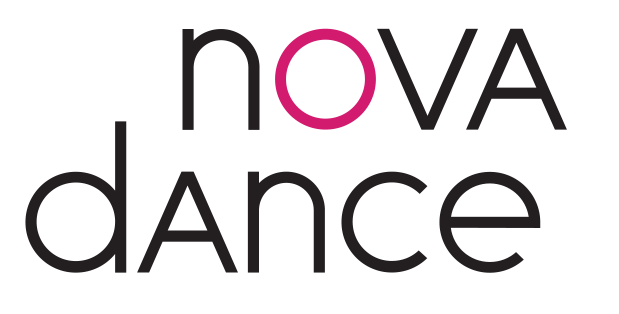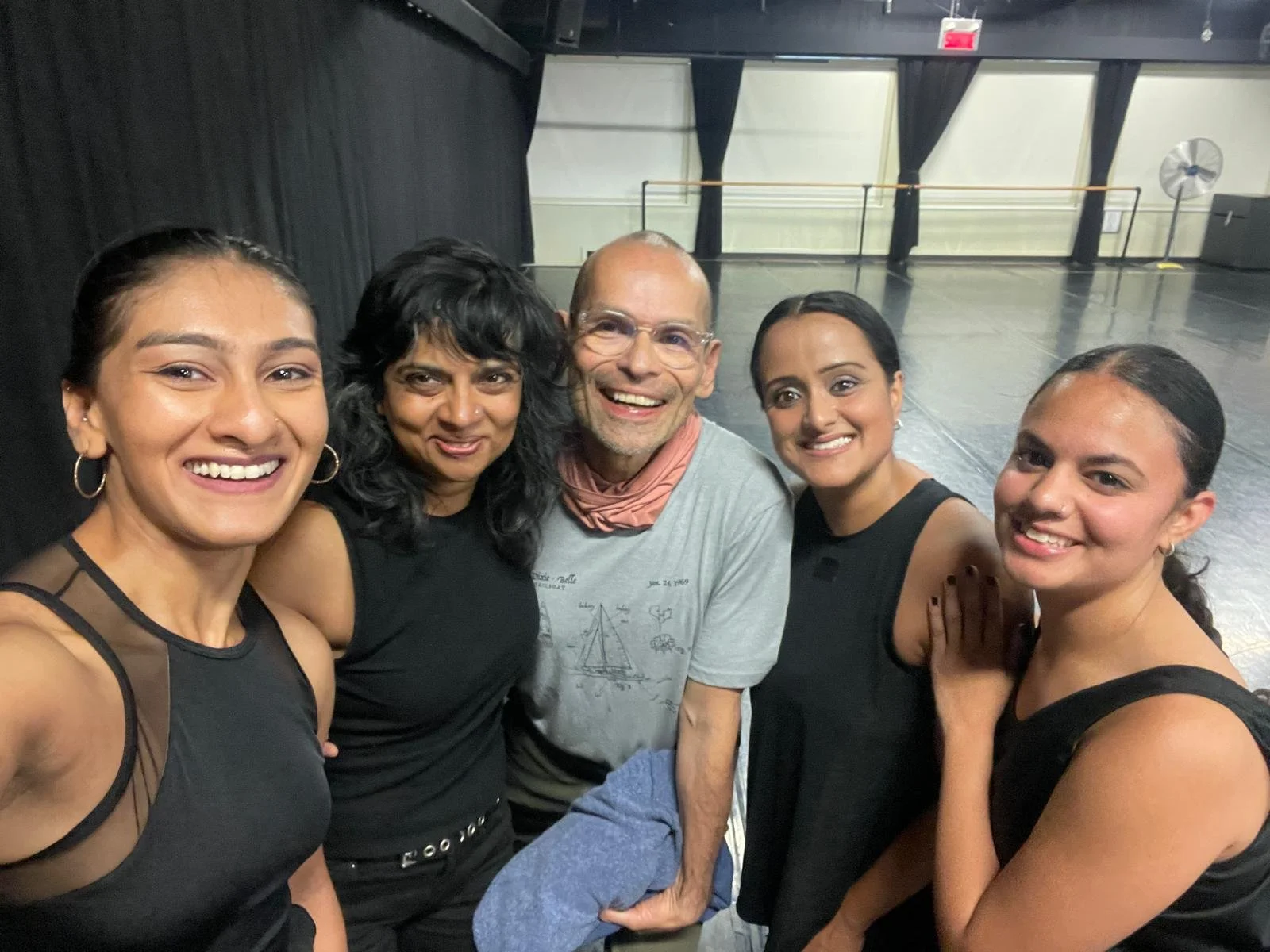Digging Deeper: Calm Abiding Reflection by Rachana Joshi
Company Dancer, Rachana Joshi reflects on Calm Abiding — from witnessing its stillness as an audience member to embodying it in performance for Navas himself:
Reflecting on my journey with Calm Abiding, I trace the evolution of this work as both an exploration of movement and a pilgrimage through time, technique, and identity. My connection to this piece began in 2019, during the Decoding Bharatanatyam performance in Oakville. At the time, I was an emerging dancer striving to understand how my diasporic experience could be reflected in the art form I had trained in for years. The performance struck a profound chord—not only because of its virtuosic choreography but for its juxtaposition of calm and chaos, two elements that mirrored my own journey within Bharatanatyam and my broader artistic path.
“I was captivated by the coexistence of silence and sound, calm and chaos, stillness and movement. The opening moments of silence, contrasted with the sharp, jarring rhythms of the sollukattu-like sound score, created a palpable tension that rippled through the audience”
Watching Nova Bhattacharya perform, I was captivated by the coexistence of silence and sound, calm and chaos, stillness and movement. The opening moments of silence, contrasted with the sharp, jarring rhythms of the sollukattu-like sound score, created a palpable tension that rippled through the audience—an audience that was predominantly caucasian and likely unfamiliar with Bharatanatyam in its traditional form, let alone its contemporary iterations. I noticed little giggles of awkwardness breaking out, the occasional clearing of a throat, as if the silence was unsettling in its power. Yet Nova remained unwavering, fully committed to the gestures she wove silently through the space. It was a profound demonstration of how movement could transcend language and cultural context, evoking something visceral, deeply resonant, and universally human.
In 2021, the pandemic offered me a unique opportunity to engage with Calm Abiding beyond its surface. Through Nova’s shared anecdotes and my exploration of José Navas’ choreographic approach, I began to understand how the principles of chance, space, and equality shaped the work. Navas’ Cunningham-inspired philosophy challenged my Bharatanatyam sensibilities. This shift opened my eyes to new possibilities, urging me to rethink how I could reimagine a deeply rooted form.
During this period, Nova Dance also hosted online workshops where we explored sections of the piece online with a few other Bharatanatyam dancers. For the first time, I encountered José Navas virtually, as he observed our work via Zoom. This experimentation, even though a digital medium, deepened my connection to the work and seeded a curiosity about multiple bodies in the work that would bloom in later years.
In August 2024, Nova Dance’s Deep End Week brought another pivotal moment as we introduced Calm Abiding to 18 artists, including Bharatanatyam dancers and others from outside the form. Watching these artists engage with the material offered me a new perspective on the work’s potential. Their reactions illuminated the universality of the piece, confirming Nova’s instinct that a solo could evolve into an ensemble. This transmission between diverse artistic minds reinforced the idea that Calm Abiding could transcend its origins and expand its scope.
“This marked the first reimagination of Calm Abiding from a solo into a duet—a daunting yet exhilarating challenge. Performing alongside Nova felt like stepping into uncharted territory, translating a deeply personal practice from one body to another. ”
Two months late, I was embarking on a duet with Nova as part of a performance in Corner Brook. This marked the first reimagination of Calm Abiding from a solo into a duet—a daunting yet exhilarating challenge. Performing alongside Nova felt like stepping into uncharted territory, translating a deeply personal practice from one body to another. The material was unfamiliar, despite my thorough notations, and the rehearsal process felt like solving a puzzle. As I worked, I came to see this piece as a reflection of our shared histories as South Asian diasporic dancers—two bodies, nearly three decades apart, yet connected through a common language of movement.
The Corner Brook performance was a transformative milestone. It was a journey into the unknown, where I wasn’t yet fully comfortable with the material. Yet, I allowed myself to be held by the music, the physicality, and the trust that emerged between us as performers. That experience informed my approach to the work at CINARS in Montreal later that year. Corner Brook taught me to find ease in discomfort, to rest into the places where uncertainty lingered, and to embrace the balance of chaos and calm inherent in the piece.
The transition to a trio in October 2024, with the addition of Neena Jayarajan and Nidhi Baadkar, further expanded the work’s possibilities. Under Nova’s direction, the piece found new dimensions. As we taught the material, I felt the responsibility of transmitting this work with care, preserving its integrity while allowing it to evolve. The experience solidified my understanding of the collaborative process and the transformative power of dance as a shared practice.
By the time we performed at CINARS in November 2024, the work had settled into my body. Performing for José Navas himself brought a mix of nervousness and exhilaration. The performance felt like the culmination of years of learning and growth—a moment where the work, as Nova often described it, revealed its “good bones.” Seeing José moved by our interpretation underscored the power of this transmission: Calm Abiding had transcended the individual artists who shaped it, becoming something greater.
“I’ve come to see Calm Abiding as more than a dance—it reflects my own diasporic experience and the lineage of choreographers who pass on pieces of their identity through movement”
Through this journey, I’ve come to see Calm Abiding as more than a dance—it reflects my own diasporic experience and the lineage of choreographers who pass on pieces of their identity through movement. As a South Asian artist navigating the intersections of tradition and innovation, this work has taught me the value of simplicity, the grace in balancing chaos and calm, and the profound connections that dance can forge across time, space, and identity. It is a testament to the universal language of movement, a craft that continues to evolve with each artist it touches.



